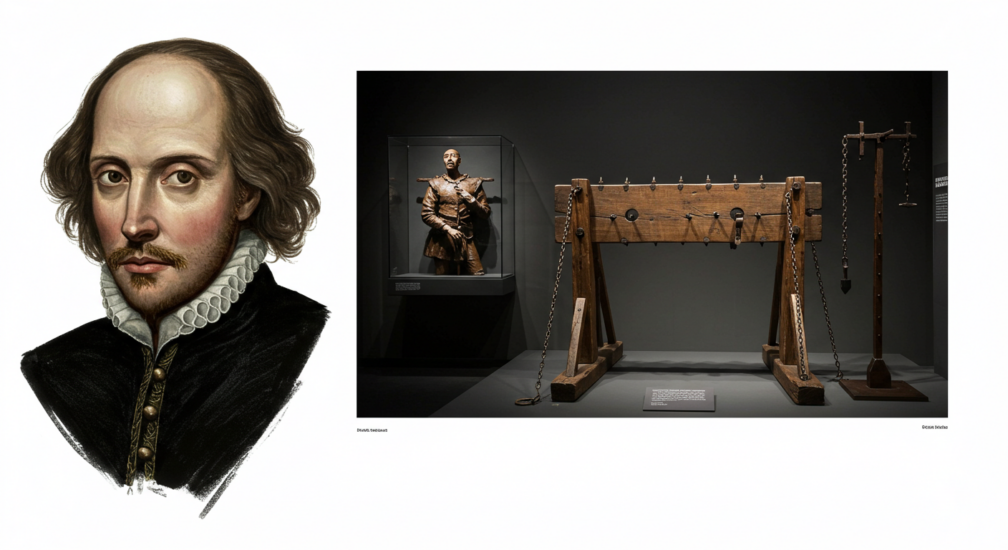Explore how William Shakespeare depicted themes of torture and cruelty in his plays, reflecting the violent punishment methods of the Elizabethan era. Through connections to historical artifacts at the Medieval Torture Museum, visitors can delve into the intersection of art and history.
Shakespeare’s Portrayal of Torture
Shakespeare’s works, such as Macbeth and King Lear, showcase both physical and mental anguish. Torture in Shakespeare’s plays critiques authority and justice. In Macbeth, the title character’s descent into madness highlights mental torment, while King Lear graphically portrays physical cruelty, like Gloucester’s blinding.
These themes reflect the brutal practices of the Elizabethan era, where tools like the rack and iron maiden symbolized power. Shakespearean views on punishment resonate with exhibits at the Medieval Torture Museum in Chicago, where such devices are vividly displayed.
Historical Context of Torture
Torture during the Elizabethan period was a means of control and extraction of information, influencing Shakespeare’s writing. Plays like The Merchant of Venice critique systemic oppression. These historical practices are brought to life at the Medieval Torture Museum in LA, one of the best things to see in LA for history enthusiasts.
Torture Devices in History
Shakespeare’s references to tools of torment, like stocks or wheels, reflect real historical practices. These artifacts, showcased at the Medieval Torture Museum in St Augustine, connect visitors to the historical realities behind the playwright’s works.
Violence and Cruelty in Shakespeare
Works like Hamlet and Othello examine psychological and emotional suffering caused by violence and betrayal. These tragedies highlight oppression and the misuse of power. Explore more on these themes in the museum’s blog, which provides insights into
Elizabethan Drama and Torture
Shakespeare’s critique of cruelty and corruption remains timeless. The Medieval Torture Museum locations in Chicago, LA, and St Augustine bring these themes to life, offering a unique look at history and literature. Discover how Shakespeare’s reflections on torture educate and captivate, connecting the past to the present.






